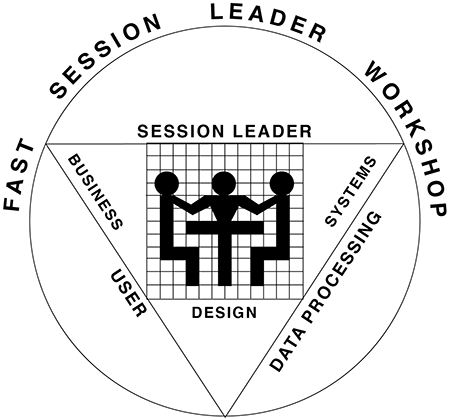July 2003

Setting the Context | Gary Rush Facilitation
Why?
I have facilitated many workshops. All were successful, some went more smoothly than others. One lesson that I have learned - the hard way - is that workshops must develop top-down or from the context in. Two workshops that I facilitated, I allowed the sponsor to drive the process. One, the project manager wanted the detailed data defined before building a data model. The second, the sponsors wanted the follow on actions defined before defining the group charter. In both cases, they had very good reasons for what they wanted. In both cases, I said, "Okay." Both workshops struggled as a result. Both groups lacked the context - the big picture.
Groups cannot build decisions from the bottom up. Groups don't think that way. They lack the context. In both workshops, the detailed work had to be revised once the context was set - not the smartest thing to do.
"How to" Set the Context
Most workshops are clear about the sequence. When not so clear, I do three things to help:
- Interview the participants
- Understand the building blocks
- Clearly define the deliverable
Interviewing the participants helps to understand how they think. This helps to ensure that you structure the process to support their thinking style. Your workshop process must match their thinking style.
Understanding the building blocks helps know what comes first. Use "Building a Process" from FAST Newsletter - Building a Process, to help. Test the sequence with the participants when you interview them (I test it numerous times with the participants, project manager, and sponsor).
Clearly defining the deliverable is very important. Not doing this has caused more problems than not. Assumptions about words such as "charter", "requirements", and "opportunities" cause many workshops to fail or struggle. This is simply because each of those words can describe many variations in output. Whenever I hear those words used to describe a deliverable, I get worried because of the built in assumptions. To correct that, always ask to see an example. If none is available, draft one and check with the project manager and sponsor. If you and they are not absolutely clear about the output, you will have problems. For example, I assumed that a "charter" meant how a group works together. With that, defining follow on actions beforehand was not a problem. When I found out (in the workshop) that the "charter" meant mission, values, objectives (i.e., strategic plan components) I understood why defining follow on actions could not be defined until the group knew who they were - they lacked the context - why they existed as a group in the first place. I should have asked to see a sample charter before the workshop. The charter sets the context.
Adjusting
What if you are in the middle of a workshop and find out the order isn't working? My advise is to stop and reset. It is better to stop than to continue on a difficult path. You will waste less time this way. Explain why to the group. Save any previous work - if it is still valid. Re-sequence the workshop and, when the context is set, go back and review the earlier work.
Summary
Sometimes, building decisions top-down sounds obvious. I, and other Facilitators, still make mistakes because we make assumptions about desired output from a workshop. Preparation is key to being a successful facilitator. One significant part of preparation is to clearly define the output and the process to achieve it. Do the three actions suggested earlier and never make assumptions and you will succeed more often in workshops. ![]()
"Smooth Sailing"


